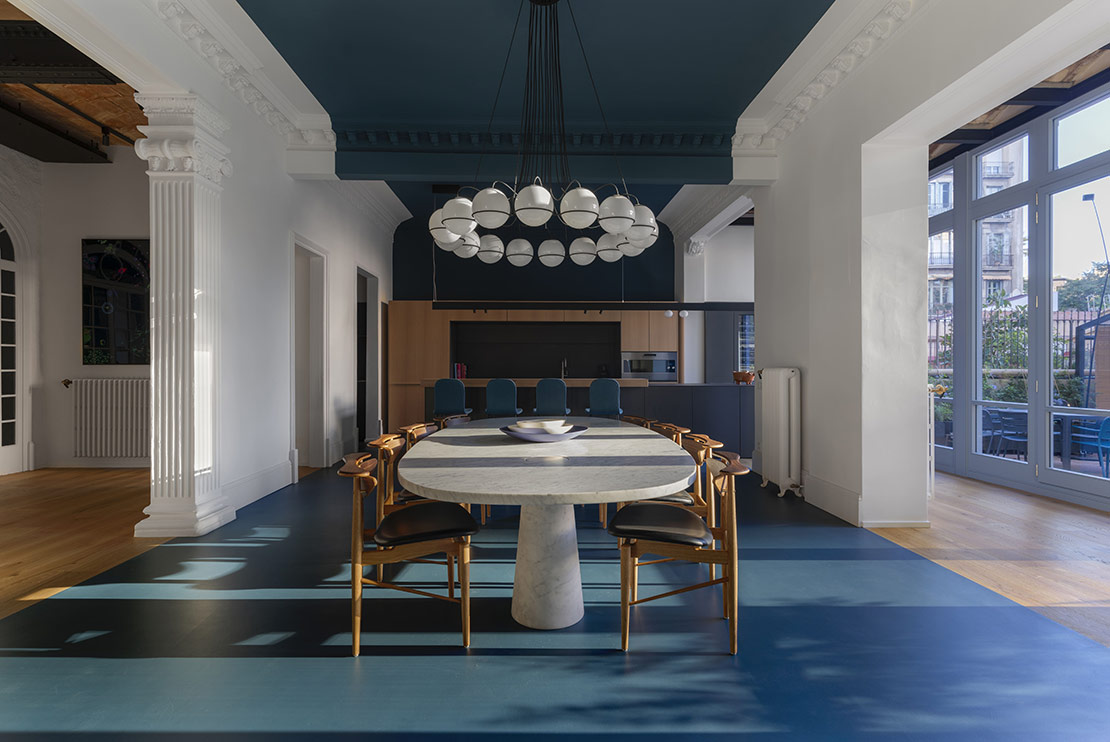

A neoclassical palace hiding a modernist soul
As soon as you cross the threshold of this residence, you are faced with a fascinating visual contrast: the original doors and windows are still there, bearing witness to the authenticity of the place. The hydraulic floors and the galleries with light filtering in from outside bring to mind the splendor of Catalan modernism. However, the modernist spirit seems to fade as you delve deeper. In the 1950s, the original charm was partly obscured by the introduction of sumptuous neoclassical elements: travertine marble columns, pillars, medallions, and decorative figures, aimed at creating an image of luxury and opulence.
When the building was renovated and the main aisles were merged together, structural reinforcements were added, then camouflaged in a neoclassical style. These interventions not only altered the original spirit of the house but transformed it into a kind of neoclassical palace that concealed beneath its skin a much older and fascinating history.





























